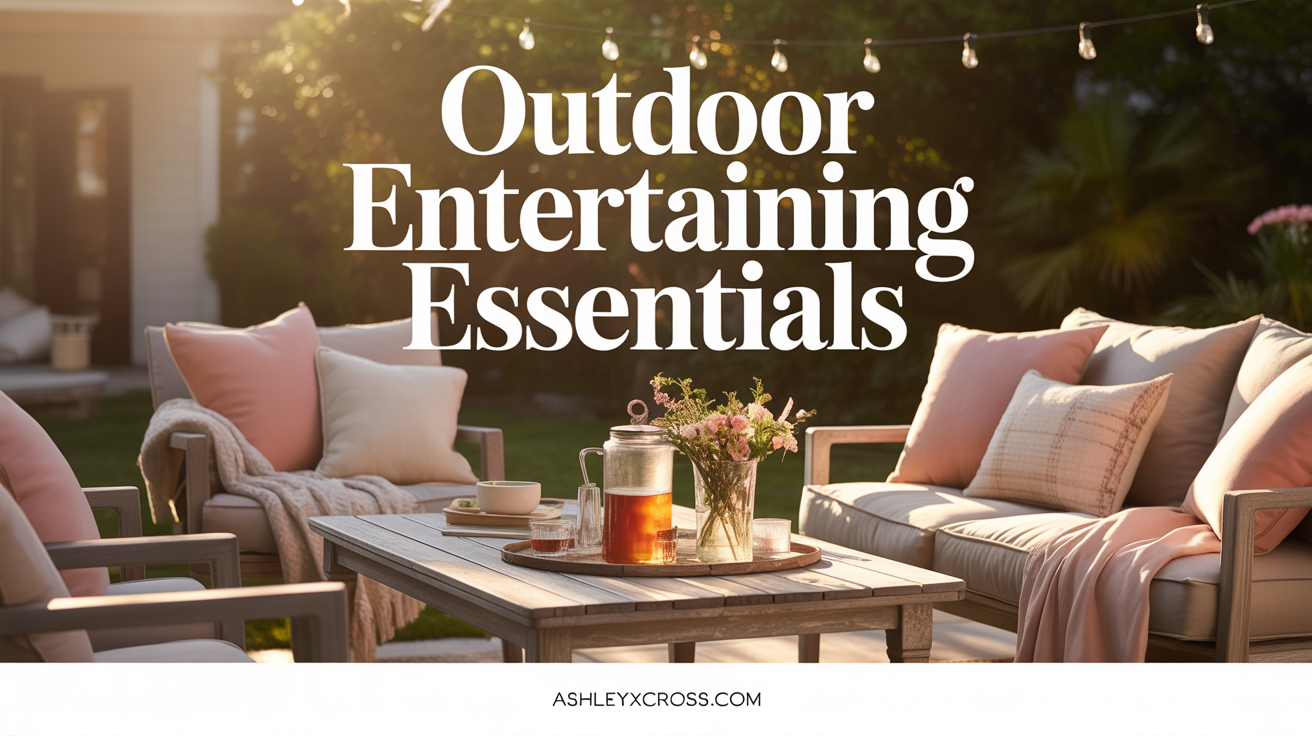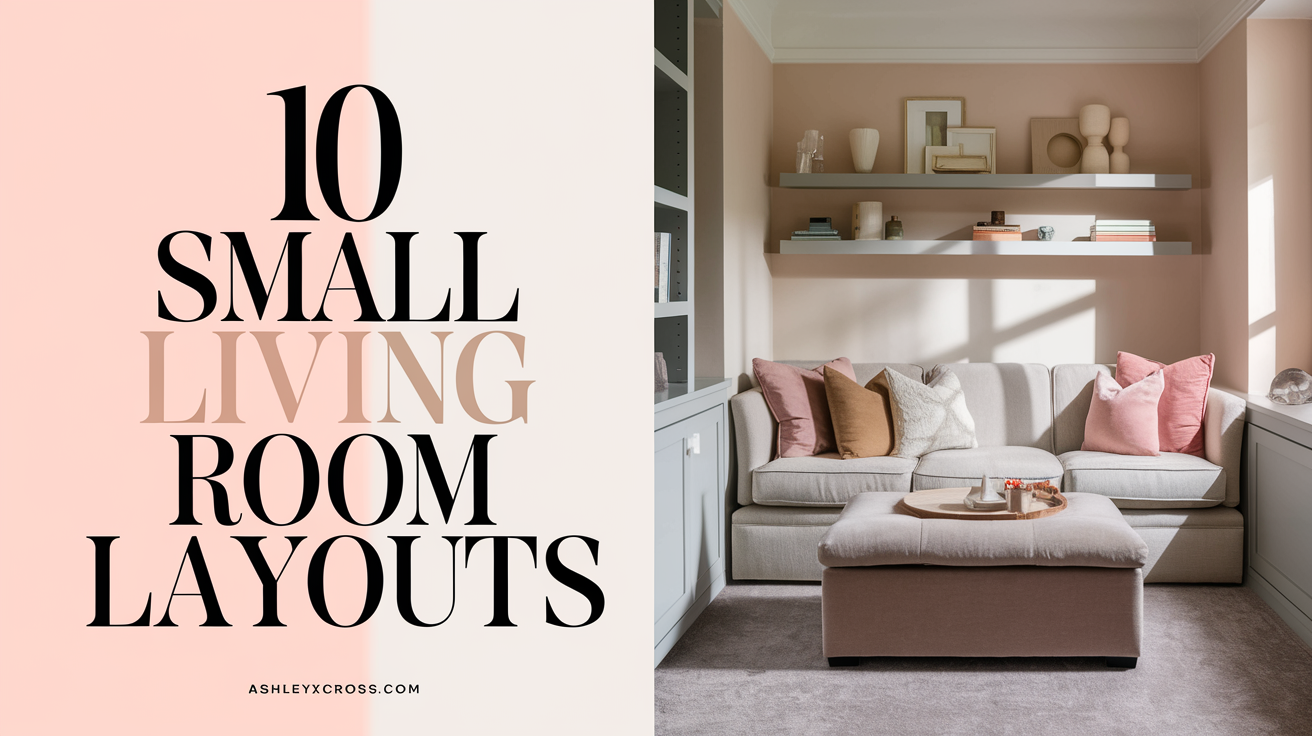How to Design a Bedroom That Feels Bigger Than It Is

Small-Space Tricks That Maximize Style, Comfort & Function
If your bedroom feels more cramped than calming, you’re not alone. Tiny bedrooms are one of the most common design struggles—and they can easily feel chaotic or cluttered if you don’t approach them with intention. But here’s the good news: you don’t need a major renovation to make a small bedroom feel bigger.
It’s all about creating visual space, layering soft, functional design elements, and choosing pieces that work with your room—not against it.
Let’s walk through simple, proven ways to transform your bedroom into a soft, open-feeling sanctuary—no matter how small your square footage.
1. Use Light, Tonal Bedding to Expand the Space
Your bed is the visual anchor of the room, and in a small space, it takes up a lot of it. That’s why your bedding matters more than you think. Light colors reflect light, making your bed feel airy and expansive instead of heavy and boxy.
What to Try:
- Crisp white, oatmeal, soft taupe, or light grey bedding
- Lightweight quilts or duvets in breathable fabrics
- Layering similar tones for that dimensional, designer look
AshleyXCross Tip: Add a slightly deeper tone in your throw blanket or lumbar pillow for contrast, but keep the palette soft and neutral overall.
Common Mistake:
Avoid dark, patterned, or super bold bedding in small rooms—it pulls the space inward and can make it feel busier than it is.
Picture This:
A platform bed with ivory linen sheets, an oat-toned comforter, and a soft camel knit throw draped at the foot. Light pours in through gauzy curtains, and the bed visually expands the whole room.
🡒 Pairs perfectly with: How to Style Your Bed Like a Designer
2. Choose Furniture With Legs (Not Blocks)
Visual space matters in a tight room. Furniture that sits directly on the floor—like boxy nightstands, skirted beds, or thick dressers—can make your space feel weighed down.
Why It Works:
When furniture has legs or open space underneath, light can move freely and your eyes can see more floor, tricking your brain into feeling like the room is bigger.
What to Look For:
- Platform beds with slim wood or metal legs
- Floating nightstands or open-style bedside tables
- Storage benches or ottomans that sit above the ground
AshleyXCross Tip: Choose furniture in soft wood tones, whitewashed finishes, or neutral paints that reflect natural light.
Common Mistake:
Avoid pairing bulky beds with heavy matching dressers. Stick to a lighter mix of pieces that blend, not compete.
Picture This:
A soft wood bed frame with visible legs, a boucle bench at the foot, and two floating nightstands mounted just above floor level. Everything feels lifted and easy to move around.
🡒 Pairs perfectly with: Maximizing Small Spaces with Minimalist and Versatile Furniture
3. Hang Curtains High and Wide
One of the easiest small-bedroom tricks is all about optical illusion. By raising your curtain rod close to the ceiling and extending it a few inches past the window on both sides, you create height and width.
What to Use:
- Linen or sheer curtains in whites, neutrals, or soft greys
- Curtain rods mounted 4–6 inches above the window frame
- Lightweight panels that puddle slightly for softness
AshleyXCross Tip: Match your curtain color to your walls to make everything feel fluid and open.
Common Mistake:
Avoid hanging curtains at window frame height—it shortens your wall and visually boxes in the space.
Picture This:
Floor-length white curtains hung 6 inches above the frame, flowing to the floor beside a window. The light pours in, and the bed is bathed in natural softness.
4. Go Vertical With Shelving and Storage
Small rooms benefit from vertical movement. If floor space is limited, move storage upward to clear visual clutter and give the room a sense of height.
Smart Storage Ideas:
- Ladder shelves in corners
- Floating wall shelves above your headboard
- Tall, slim bookcases instead of wide dressers
AshleyXCross Tip: Use matching baskets or storage bins to keep your vertical storage looking curated, not chaotic.
Common Mistake:
Don’t overload shelves with too many small items—it makes the room feel busier. Keep it simple, functional, and stylish.
Picture This:
A ladder shelf holds a mix of woven baskets, stacked books, and one ceramic planter. Floating shelves above the bed hold framed art and candles in a soft neutral palette.
🡒 Pairs perfectly with: 10 Innovative Storage Solutions for Tiny Apartments
5. Add a Large Mirror (But Be Strategic)
Mirrors are a designer go-to for small spaces because they bounce light and create the illusion of depth. But placement matters.
Where to Put It:
- Across from a window to reflect natural light
- Diagonally across from the door to open the space
- Above a dresser to create visual balance
AshleyXCross Tip: Choose a thin-frame or frameless mirror to avoid adding visual weight.
Common Mistake:
Don’t place mirrors where they’ll reflect clutter (like a laundry basket or messy corner). Keep the reflection intentional.
Picture This:
An arched gold mirror leans against the wall across from the window. It reflects soft curtains and open space, instantly doubling the light.
6. Ditch Table Lamps for Wall Sconces
If your nightstands are already tiny (or non-existent), ditch the lamp. Wall-mounted sconces free up surface space and instantly elevate your room’s design.
Best Options:
- Plug-in sconces (great for renters)
- Adjustable arms for bedtime reading
- Puck-light sconces for DIYers
AshleyXCross Tip: Choose sconces that match your room’s aesthetic—brass for glam, matte black for modern, or white ceramic for soft, airy rooms.
Common Mistake:
Avoid oversized lampshades—they overwhelm tight rooms and waste precious real estate.
Picture This:
Two brass plug-in sconces flank a small headboard, leaving space on the floating nightstands for a candle and a small journal.
7. Float Your Nightstand (or Skip It Entirely)
In some bedrooms, traditional nightstands just take up too much space. Instead, float your nightstand or repurpose an unexpected item.
Creative Options:
- Wall-mounted shelf
- Narrow storage stool
- Stack of books topped with a tray
AshleyXCross Tip: Only keep what you actually use on your nightstand. A small dish, your book, and a glass of water go a long way.
Common Mistake:
Avoid oversized or bulky nightstands—especially ones with little to no function.
Picture This:
A matte white wall shelf next to the bed holds a small diffuser and a stack of three neutral-toned books. Underneath, a basket holds an extra throw.
8. Let One Statement Piece Shine
In small rooms, less is more—but that doesn’t mean boring. Pick one statement piece that makes you feel something every time you walk in.
Go Bold With:
- A stunning upholstered headboard
- A sculptural light fixture
- A large piece of art above your bed
Then keep everything else soft, tonal, and quiet. Let that one moment breathe.
AshleyXCross Tip: Think of your statement piece as the “main character.” Everything else is the support cast.
Common Mistake:
Too many focal points make the room feel cluttered and unfocused. Pick one, maybe two, and simplify everything else.
Picture This:
A tall cream headboard in soft velvet. The bedding is kept tonal and minimal, with a single art piece above the bed and a glass pendant light floating nearby.
🡒 Pairs perfectly with: How to Style Your Bed Like a Designer
Final Thoughts:
A small bedroom doesn’t mean small style. With soft layers, intentional furniture choices, and a few clever visual tricks, your space can feel twice its size—without giving up the cozy, calming energy you deserve.
Let your bedroom be a reflection of how you want to feel: open, organized, and fully at peace. Whether you’re styling a studio or refreshing your guest room, you can make it feel like a sanctuary—one thoughtful piece at a time.







I’ve been following your blog for quite some time now, and I’m continually impressed by the quality of your content. Your ability to blend information with entertainment is truly commendable.
Your blog has quickly become my go-to source for reliable information and thought-provoking commentary. I’m constantly recommending it to friends and colleagues. Keep up the excellent work!
Your passion for your subject matter shines through in every post. It’s clear that you genuinely care about sharing knowledge and making a positive impact on your readers. Kudos to you!
I do not even know how I ended up here but I thought this post was great I dont know who you are but definitely youre going to a famous blogger if you arent already Cheers
My brother recommended I might like this web site He was totally right This post actually made my day You cannt imagine just how much time I had spent for this information Thanks
I am not sure where youre getting your info but good topic I needs to spend some time learning much more or understanding more Thanks for magnificent info I was looking for this information for my mission
Hi i think that i saw you visited my web site thus i came to Return the favore Im attempting to find things to enhance my siteI suppose its ok to use a few of your ideas
I just wanted to drop by and say how much I appreciate your blog. Your writing style is both engaging and informative, making it a pleasure to read. Looking forward to your future posts!
Your blog has quickly become my go-to source for reliable information and thought-provoking commentary. I’m constantly recommending it to friends and colleagues. Keep up the excellent work!
Your blog is a testament to your dedication to your craft. Your commitment to excellence is evident in every aspect of your writing. Thank you for being such a positive influence in the online community.
Excellent blog here Also your website loads up very fast What web host are you using Can I get your affiliate link to your host I wish my web site loaded up as quickly as yours lol
I am not sure where youre getting your info but good topic I needs to spend some time learning much more or understanding more Thanks for magnificent info I was looking for this information for my mission
My brother suggested I might like this blog He was totally right This post actually made my day You can not imagine simply how much time I had spent for this info Thanks
Its like you read my mind You appear to know so much about this like you wrote the book in it or something I think that you can do with a few pics to drive the message home a little bit but instead of that this is excellent blog A fantastic read Ill certainly be back
I just wanted to express my gratitude for the valuable insights you provide through your blog. Your expertise shines through in every word, and I’m grateful for the opportunity to learn from you.
Your tone is friendly and informative — made for an enjoyable read.
This topic is so relevant right now. Thanks for the timely post.
Great visuals and clear captions — they added a lot of value.
Well-written and insightful. Would love to see case studies next.
There is definately a lot to find out about this subject. I like all the points you made
Your blog is a testament to your dedication to your craft. Your commitment to excellence is evident in every aspect of your writing. Thank you for being such a positive influence in the online community.
I just wanted to drop by and say how much I appreciate your blog. Your writing style is both engaging and informative, making it a pleasure to read. Looking forward to your future posts!
Short but powerful — great advice presented clearly.
Your writing style is very engaging.